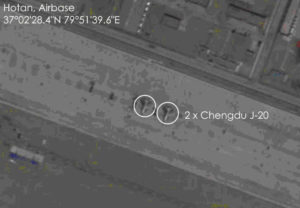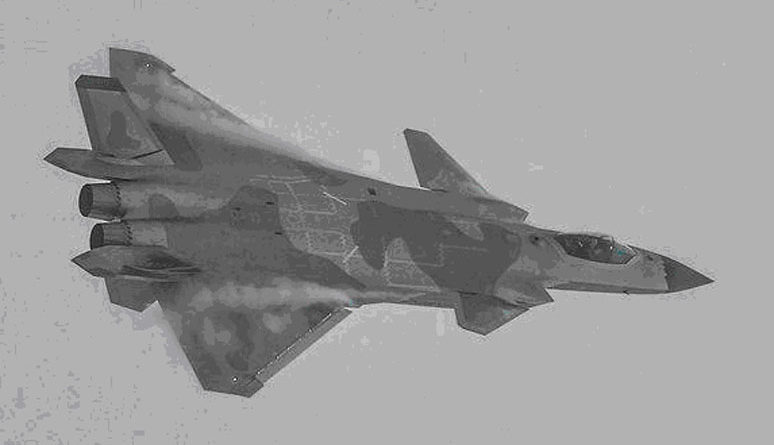Chinese Stealth Fighters Head West To Confront India
18 August, 2020
Two Chinese air force J-20 stealth fighters have appeared at an air base in China’s far west as the mountain stand-off between India and Chine enters its fourth month.
The twin-engine J-20s are visible in commercial satellite imagery of Hotan air base, in the Uighur autonomous region of Xinjiang. Chinese social-media users first spotted the planes.
The J-20 deployment, however temporary, signals Beijing’s resolve as China wrestles with India for influence over a disputed region of the Himalayas. But a pair of warplanes, no matter how sophisticated, don’t represent much actual combat power.
It’s not clear whether there are more J-20s out west than just two that are visible in the satellite photo. The Chinese air force possesses only around 40 J-20s.
Hotan lies some 200 miles from Ladakh, the region of northern India along which runs the Line of Actual Control, the demarcation between Indian and Chinese forces in the Himalayas. Diplomats drew that line as part of truce talks following a bitter, bloody border war in 1962.
After weeks of posturing, in early June Chinese forces killed 20 Indian soldiers in a skirmish along the LOAC. Forty-three Chinese soldiers also were injured or died, according to press reports.
Indian and Chinese warplanes and helicopters are patrolling the border zone as the stand-off continues. India has deployed Su-30, MiG-29 and MiG-29K fighters.
The People’s Liberation Army Air Force previously deployed at least six H-6 bombers with KD-63 cruise missiles to Kashgar airport, also in Xinjiangan, placing the bombers within striking distance of Indian forces.
The tiny contingent of J-20s arguably is less potent than the H-6 force is. Two J-20s flying together probably could mount no more than a single patrol every couple of days. Double the J-20 detachment to four planes, and you might get a daily two-jet mission.

Triple it, and you might be able to sustain slightly more than a mission per day, on average. But at that size, the J-20 contingent at Hotan could require the support of the PLAAF’s entire stealth-fighter fleet.
That’s because, owing to training and maintenance requirements, a force of 40 fighters can sustain just a handful of planes on front-line operations over a prolonged period of time.
It’s a problem that smaller European air force are struggling with as they acquire tiny fleets of F-35 stealth fighters to replace their larger fleets of old F-16s. Denmark is buying 27 F-35s to replace 41 F-16s and expects to deploy four F-35s at a time. Belgium is acquiring 34 F-35s to replace 56 F-16s and could deploy around five F-35s.
The J-20s however do underscore Chinese resolve—and could hint at larger, future deployments of a wider variety of fighter types. The Chinese air force at present is thin on the ground in China’s west. The PLAAF concentrates its forces in the east for operations over the disputed China Seas and for a possible invasion of Taiwan.
Besides, the austere conditions and performance-draining high elevations of western airfields complicate fighter operations. Chinese J-16s that routinely fly from western bases reportedly carry just a few small air-to-air missiles and must get new brake discs after every mission.
At 4,600 feet above sea level, Hotan is higher than are most of the bases the PLAAF operates from—with the obvious impact on the performance of aircraft flying from the base. Hotan’s proximity to the LOAC at least mitigates the performance impact of the high, thin air.
To be clear, Indian forces in the region suffer the same constraints, although it’s worth pointing out that India has more experience with air operations in the mountains.
During a clash with Pakistani forces in Kashmir back in 1999, a single coordinated strike by Indian air force Mirage 2000s hauling Litening camera pods and laser-guided bombs succeeded in knocking out a key Pakistani headquarters.
Courtesy: Opera News/ forbes.com

